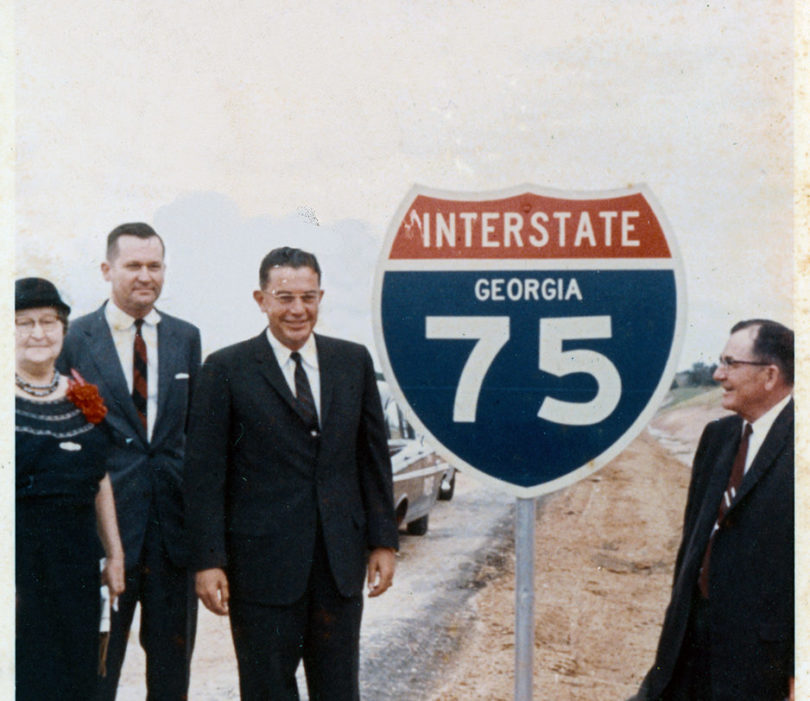Editor’s note: Because of the suspension of in-class instruction and to keep our community safe from COVID-19, viewing of this exhibition and related events may be impacted. Click here for building hours.
The construction of interstate highways transformed the landscape of the U.S. during the second half of the 20th century; the process also altered the economy, politics and culture of the country.
A new exhibition on display at the Richard B. Russell Building Special Collections Libraries explores the origins and impact of these roads in Georgia with a focus on the political compromises and fiscal policies that made them possible.
Paving the Road to Progress: Georgia Interstate Highways is now on display in the Richard B. Russell Library for Political Research and Studies’ gallery. It traverses the rocky path of the interstate system’s development, which cost far more and took much longer than predicted.
“Road politics is a central feature of modern Georgia government,” said Sheryl Vogt, director of the Russell Library. “This exhibit offers visitors a behind-the-scenes look at the often contentious process that took the Interstate Highway System from concept to reality here in Georgia.”
The exhibition examines the tension between motorists, landowners, politicians and the State Highway Department through artifacts, including historic maps, reports, correspondence and legislation. Political cartoons, pamphlets and posters reveal the cultural impact of interstate travel.
Paving the Road to Progress: Georgia Interstate Highways will remain on display through Aug. 21, and a family event centered on the exhibit is planned for May 16.
The Russell Special Collections Building is open free to the public weekdays from 8 a.m. to 5 p.m. and on Saturdays from 1 p.m. to 5 p.m.








